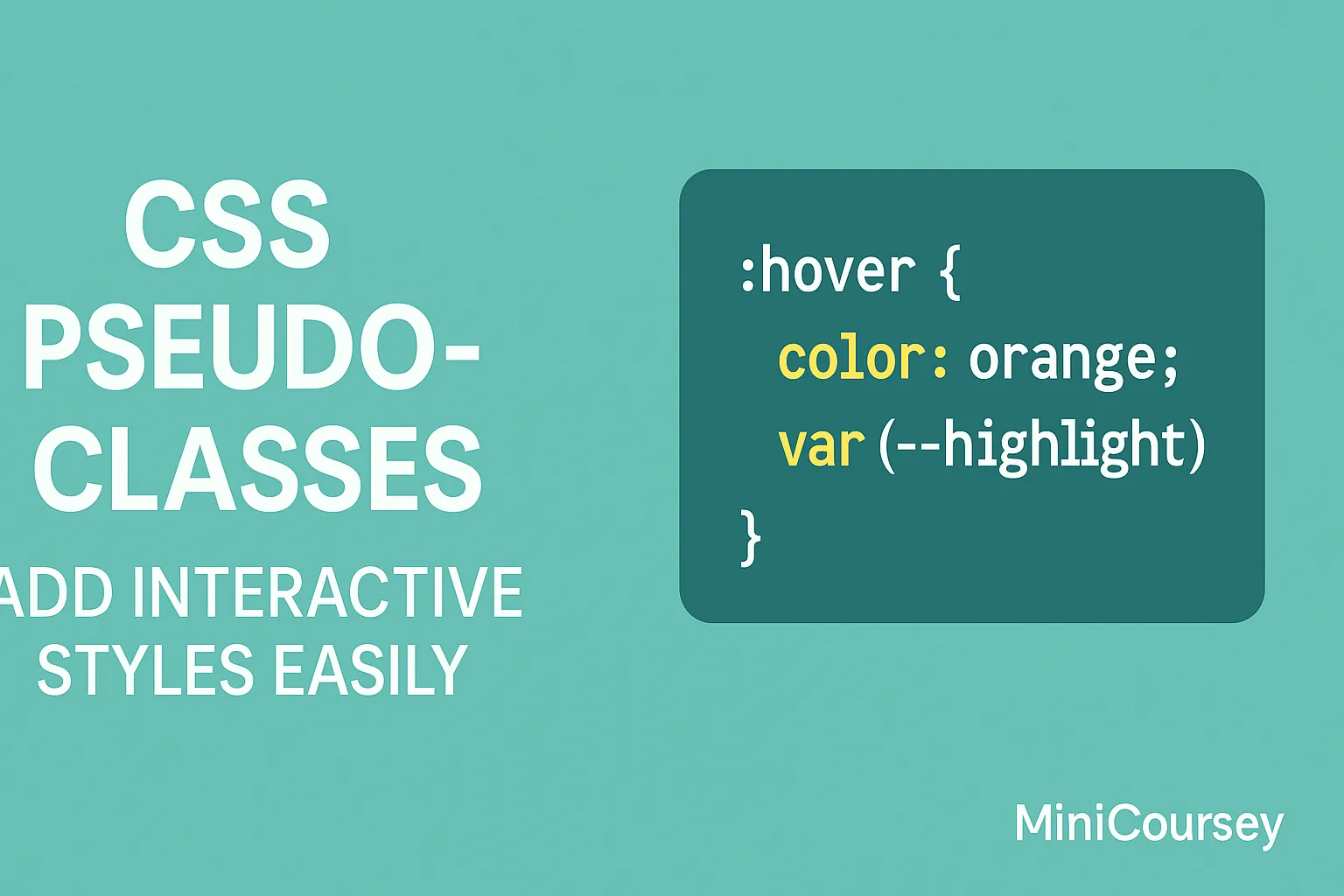Ever wondered how buttons change color when you hover, or how links look different when they’ve been visited? These small interactions make websites feel alive and more user-friendly. You don’t need JavaScript for all of this — CSS Pseudo-Classes do the job perfectly. In this MiniCoursey quick guide, you’ll learn what pseudo-classes are, how they work, and how to use them to create common interactive effects like hover states, focus outlines, or even styling the first or last child in a list. Mastering pseudo-classes is a big step in building modern, responsive, and engaging web pages.
What are CSS Pseudo-Classes?
CSS Pseudo-Classes let you apply styles to an element based on its state or position in the document tree. For example, :hover targets an element when a user’s mouse pointer is over it, while :focus applies styles when an element is active, like when a user clicks into a text input. This way, you can style user interactions directly with CSS, making your site feel polished without any extra code.
How to Use :hover
The most popular pseudo-class is :hover. Let’s say you have a button. You can change its background or color when a user hovers over it to give instant feedback.
button {
background: #007acc;
color: #fff;
border: none;
padding: 10px 20px;
}
button:hover {
background: #005fa3;
cursor: pointer;
}
Other Common Pseudo-Classes
Besides :hover, here are a few useful pseudo-classes you’ll see all the time:
:focus— Highlights an input when it’s active.:visited— Styles links the user has already clicked.:first-childand:last-child— Target the first or last element in a container.
a:visited {
color: purple;
}
input:focus {
outline: 2px solid #007acc;
}
ul li:first-child {
font-weight: bold;
}
💡 Pro Tip: Always test pseudo-classes on different devices to make sure touch screens or keyboard navigation work smoothly.
⚠️ Common Mistake: Don’t style
:hoveronly. Add:focustoo — it’s important for accessibility!
FAQ
Q: Do I need JavaScript for hover effects?
A: No! Hover and focus interactions can be handled entirely with CSS Pseudo-Classes.
Q: Can I chain pseudo-classes?
A: Yes — for example, button:hover:focus applies styles when both are true.
Related Link
👉 Check out previous: CSS Variables — Make Your Styles Dynamic
Where to Learn More
Experiment with different pseudo-classes and try combining them with transitions for smooth animations. MDN’s pseudo-classes reference is an excellent place to dig deeper and see all the available options with real examples.
Conclusion
Congrats — now you know how to add interaction to your website with CSS Pseudo-Classes! Small touches like hover effects and focus states make your UI feel more responsive and user-friendly. Start adding them to your buttons, links, and forms today.
✨ Bookmark MiniCoursey for more quick & free mini courses!

